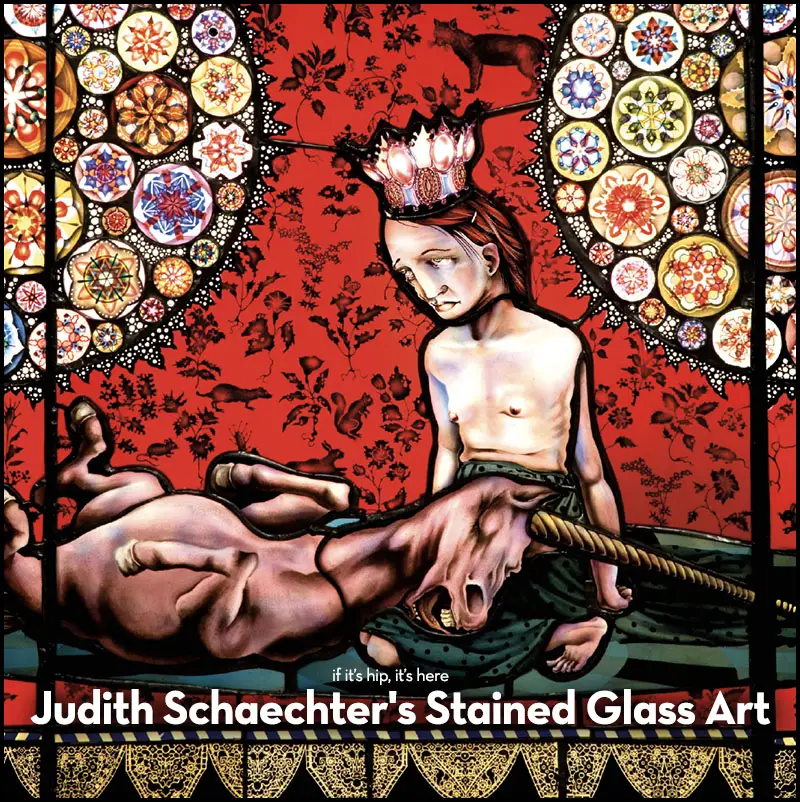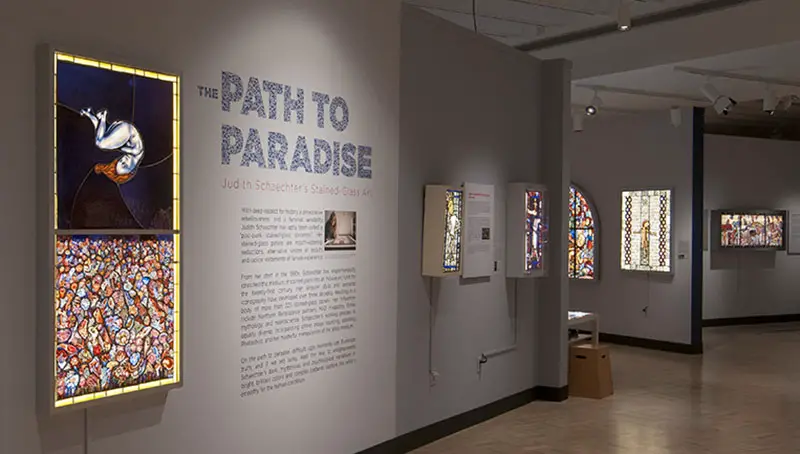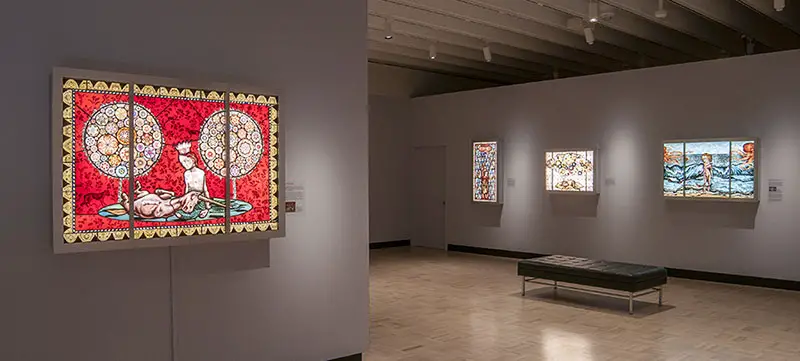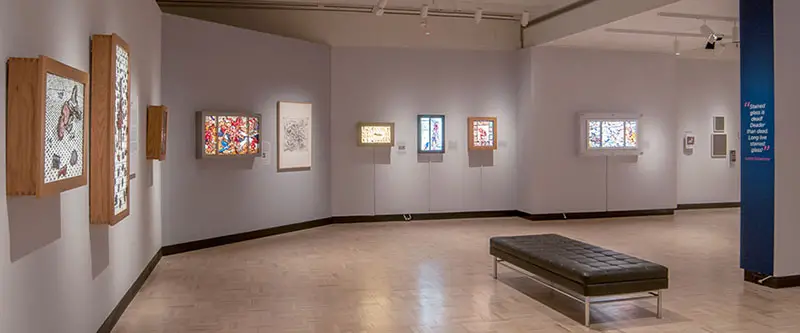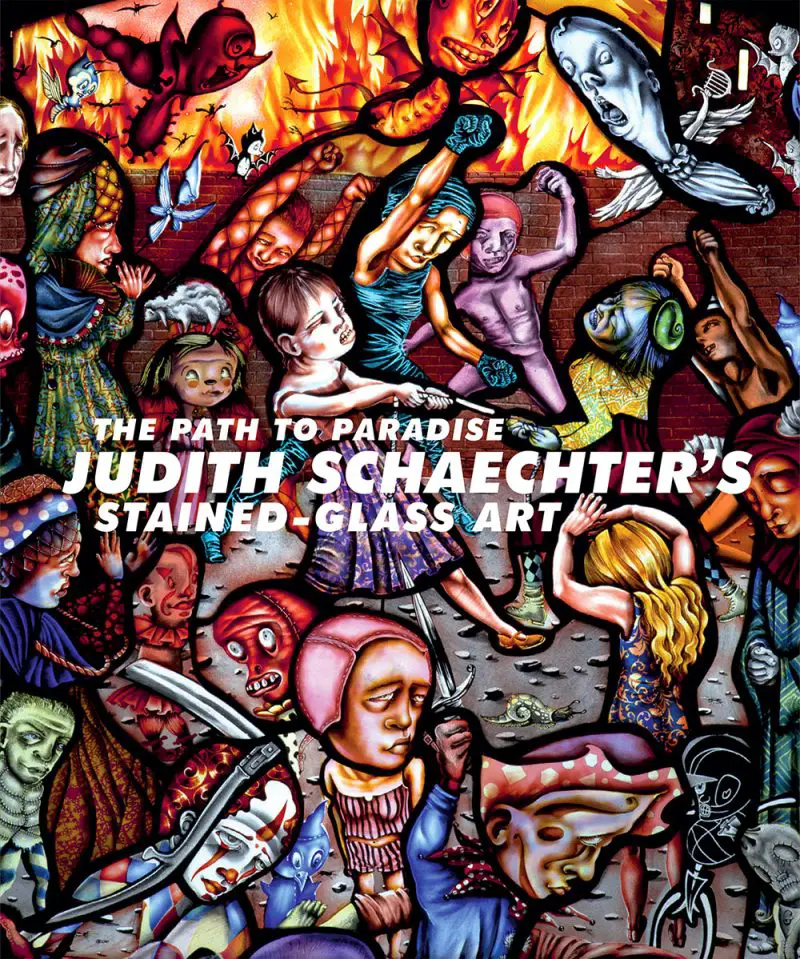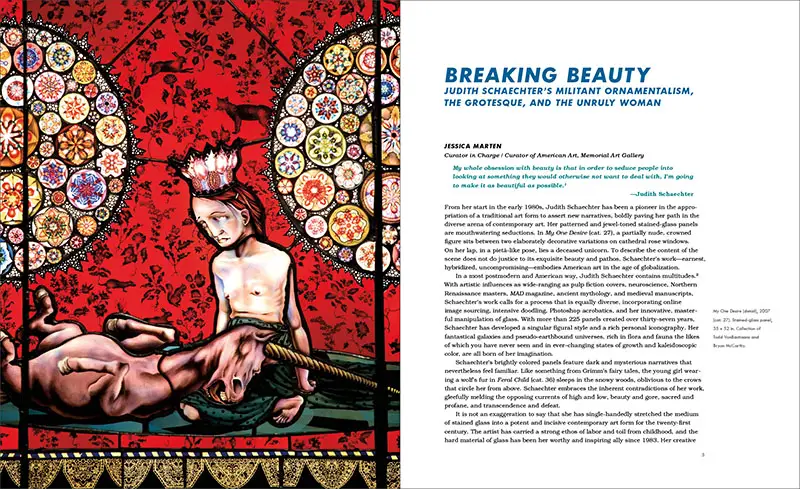When most people think about stained glass, the Romanesque and Gothic narrative panels in churches and synagogues are usually what comes to mind. Artists and architects have since explored the media, processes and techniques and pushed it far beyond Biblical themes. One of the most impressive living contemporary stained glass artists is Judith Schaechter, whose most recent exhibition, Path To Paradise, features over 40 pieces of her extraordinary work.
Judith Schaechter Stained Glass Art
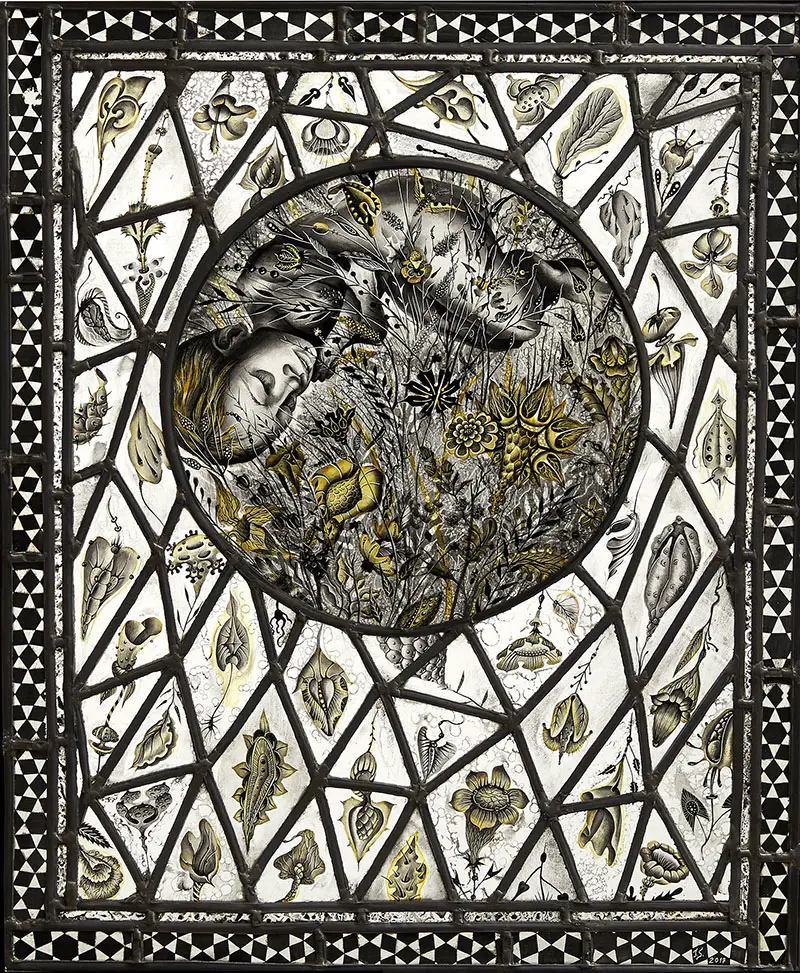
The Path to Paradise is the first survey and major scholarly assessment of groundbreaking artist Judith Schaechter’s 37-year career. The exhibit features approximately 45 of her stained-glass panels along with a selection of related drawings and process materials.
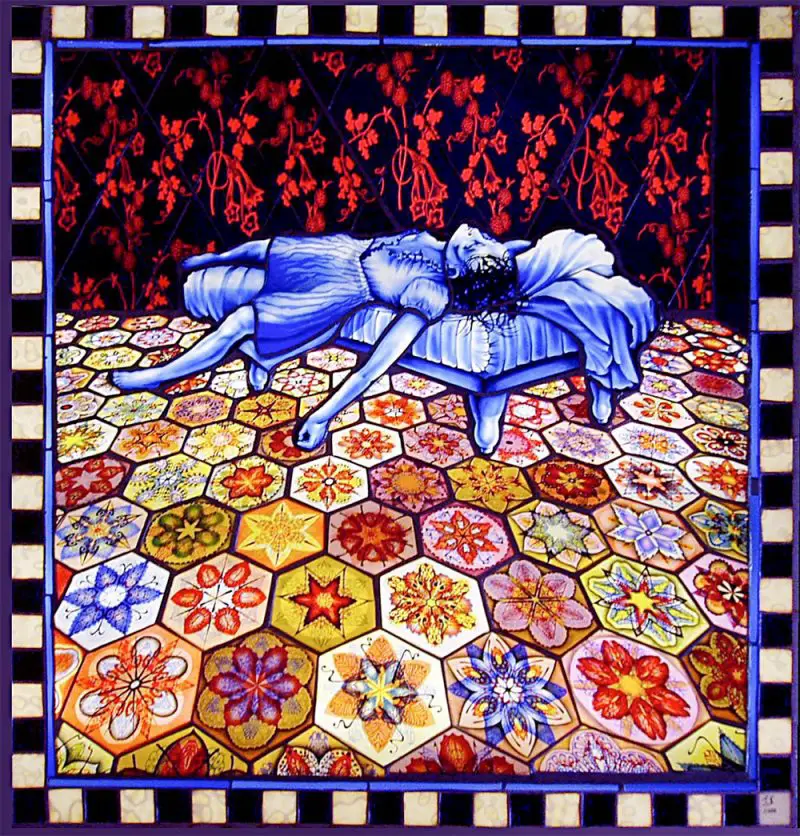
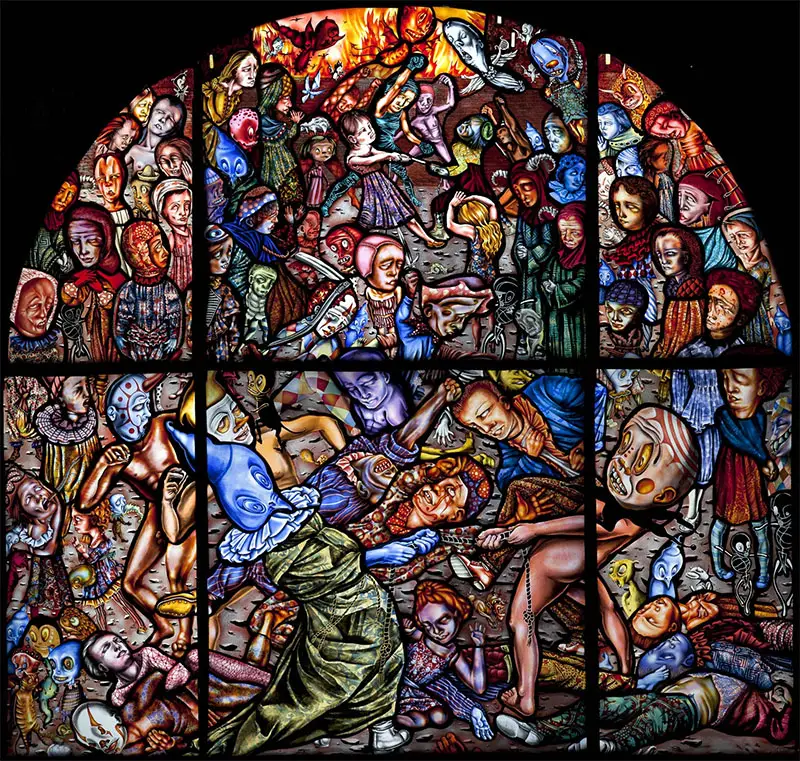
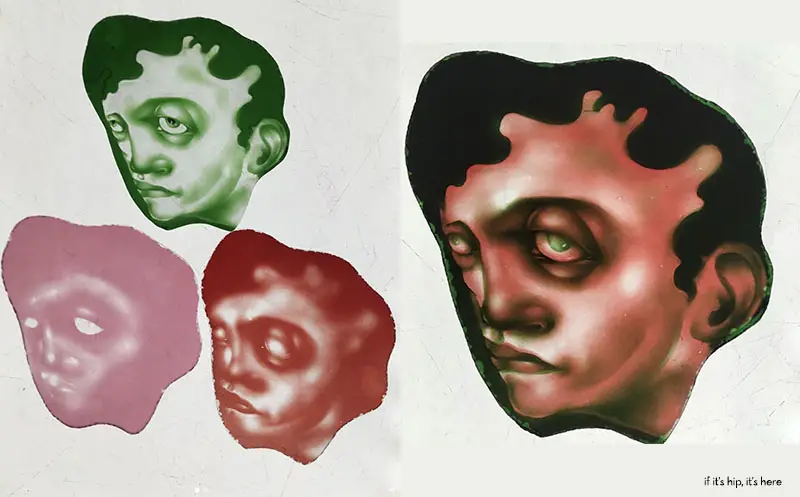
From her start in the 1980s, Judith Schaechter (b. 1961) has stretched the medium of stained glass into an incisive art form for the twenty-first century, boldly paving her path in the diverse arena of contemporary art. With deep respect for history, a provocative rebelliousness, and a feminist sensibility, Schaechter has aptly been called a “post-punk stained-glass sorceress.” Her meticulous and awe-inspiring stained-glass panels are intentional seductions, alternative visions of beauty, and radical statements of female experience.
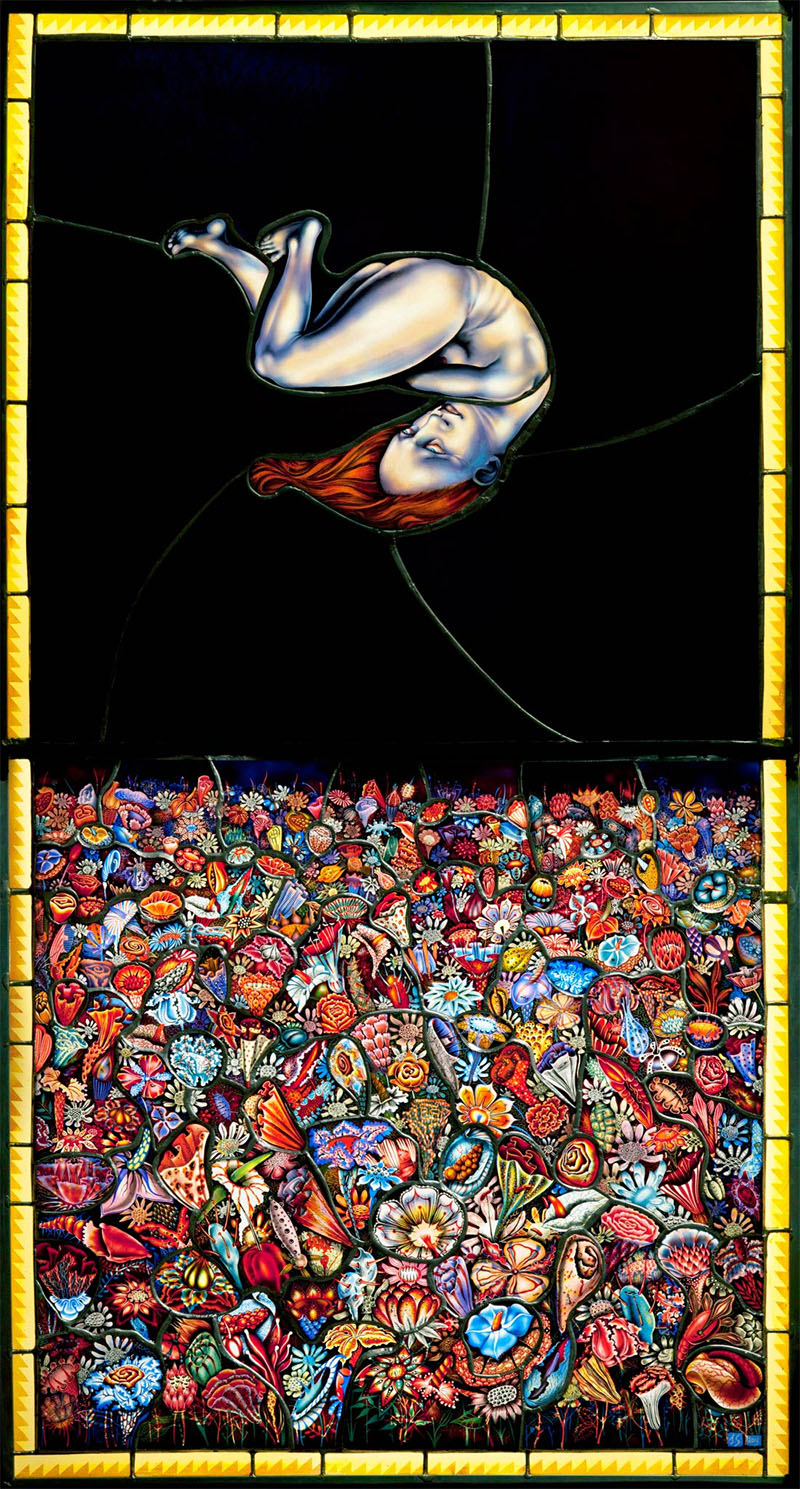
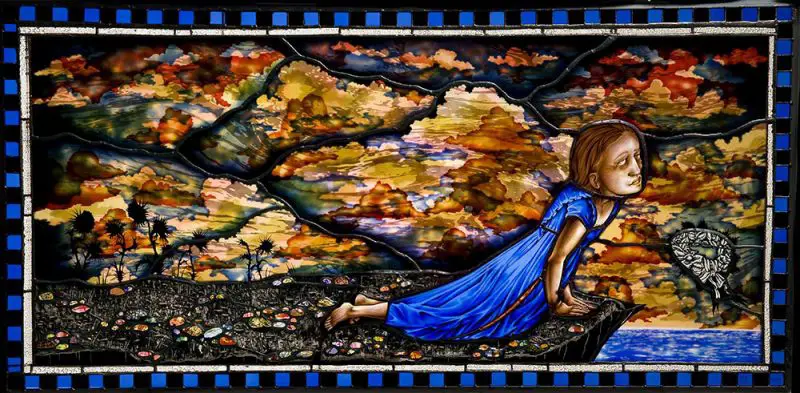
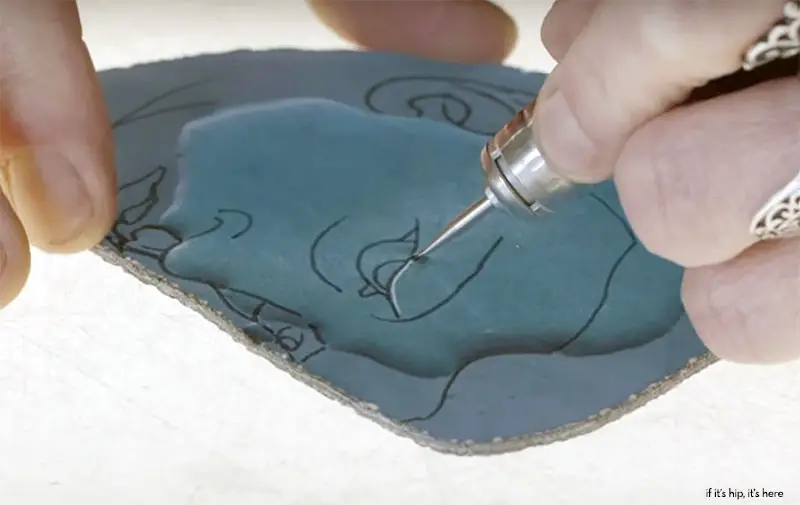
With more than 225 panels spanning her career, Schaechter has developed a singular figural style and a rich personal iconography. Her unruly female protagonists neither fit the ideal standards of beauty, nor do they comport themselves in a becoming manner, as they sometimes vomit, writhe, and commit violent crimes and sexual indiscretions. Her fantastical galaxies and pseudo-earthbound universes, rich in bizarre flora and fauna and in ever-changing states of growth and kaleidoscopic color, are all born of her imagination.
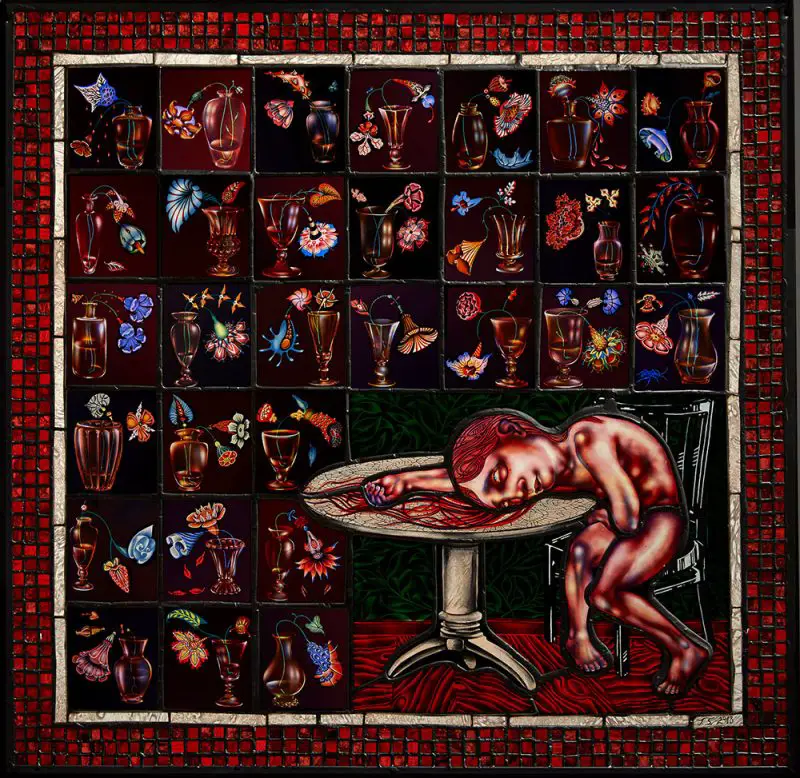
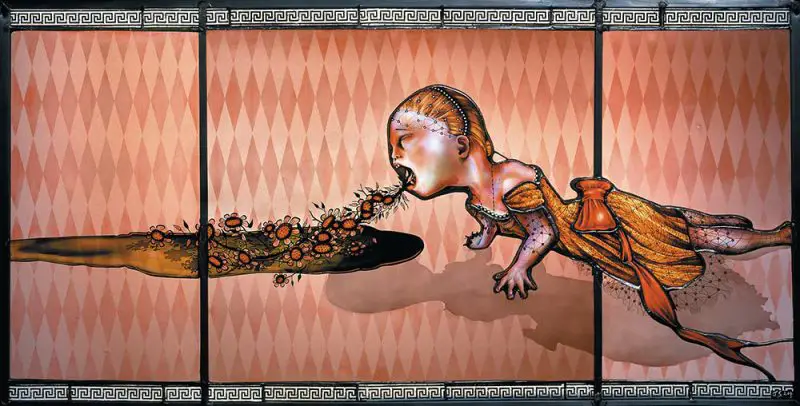
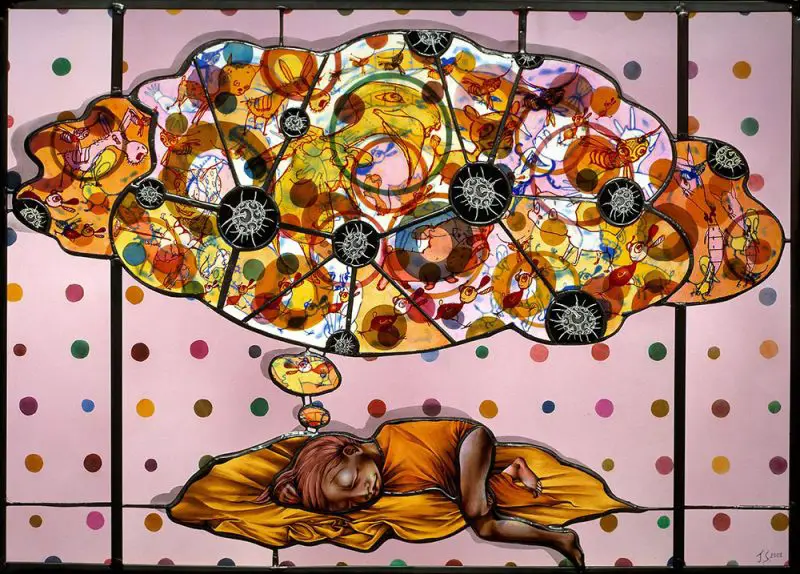
“Schaechter’s provocations express her punk rebellion against the status quo, and they normalize the nuances of female sexuality, a topic still fraught today. In his introduction to the catalogue, noted scholar Glenn Adamson celebrates the artist’s “comic grotesqueries…infused with a degree of heavenly grace.” Adamson continues, “She does not turn her eyes away from the very worst of human nature. Schaechter must be the only stained-glass artist in history whose work warrants trigger warnings.”
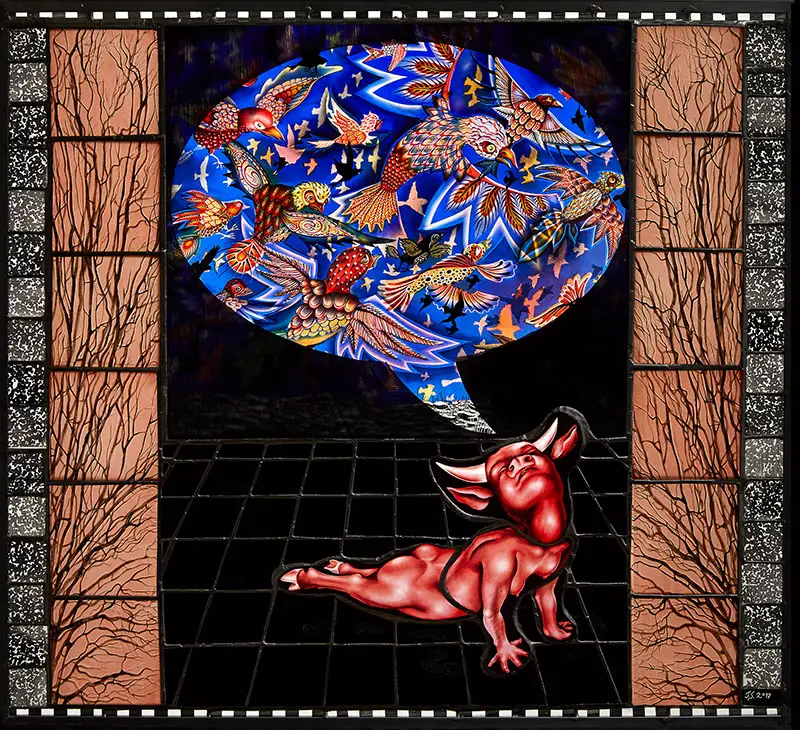
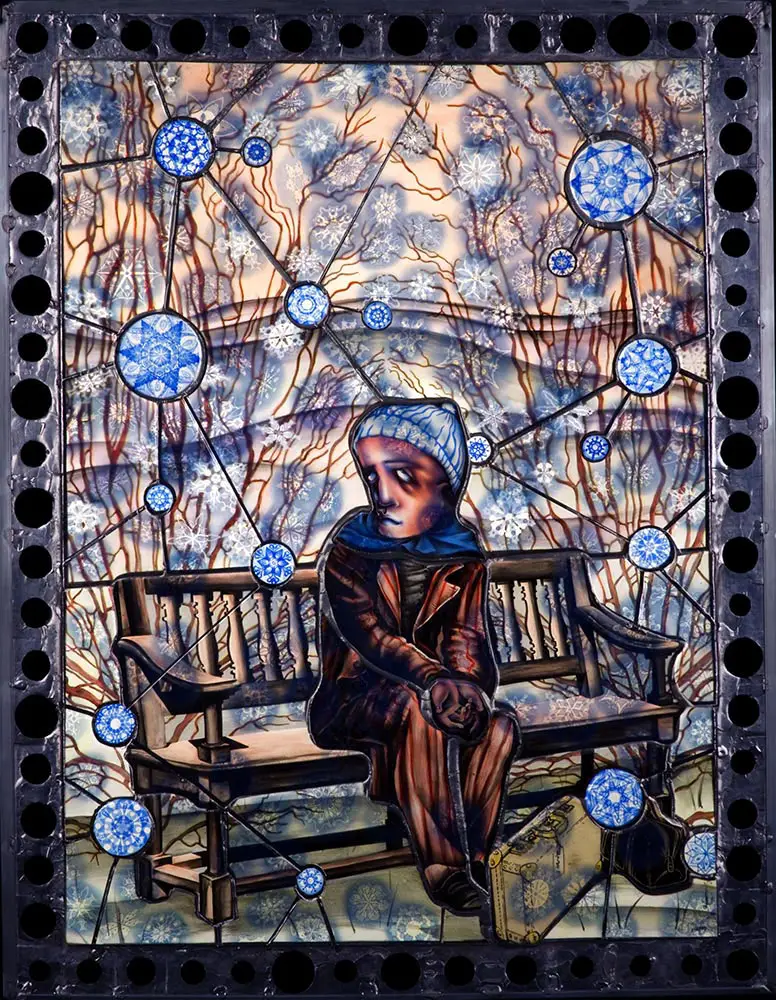
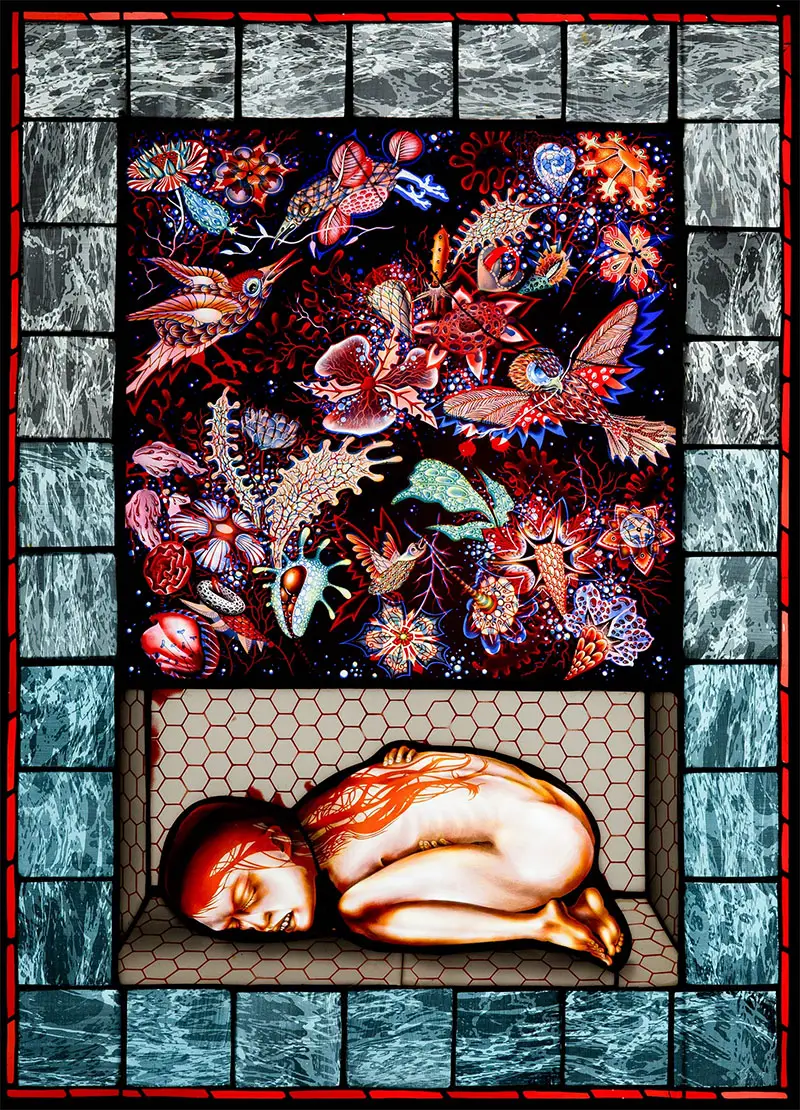
Schaechter’s respect for the traditional medium of stained glass is matched by her drive to innovate. She is well versed in the historic techniques of stained glass, however, her panels—hung from the wall in custom-made light boxes—are contemporary art forms that stand alone. With artistic influences as wide-ranging as pulp fiction covers, neuroscience, Northern Renaissance masters, MAD magazine, ancient mythology, and medieval manuscripts, Schaechter’s work calls for a process that is equally diverse, incorporating online image sourcing, intensive doodling, Photoshop acrobatics, and her innovative, masterful manipulation of glass. She said she thinks of her practice “as an extreme sport. I’m not messing around. I deliberately make it as hard as possible. . . .”
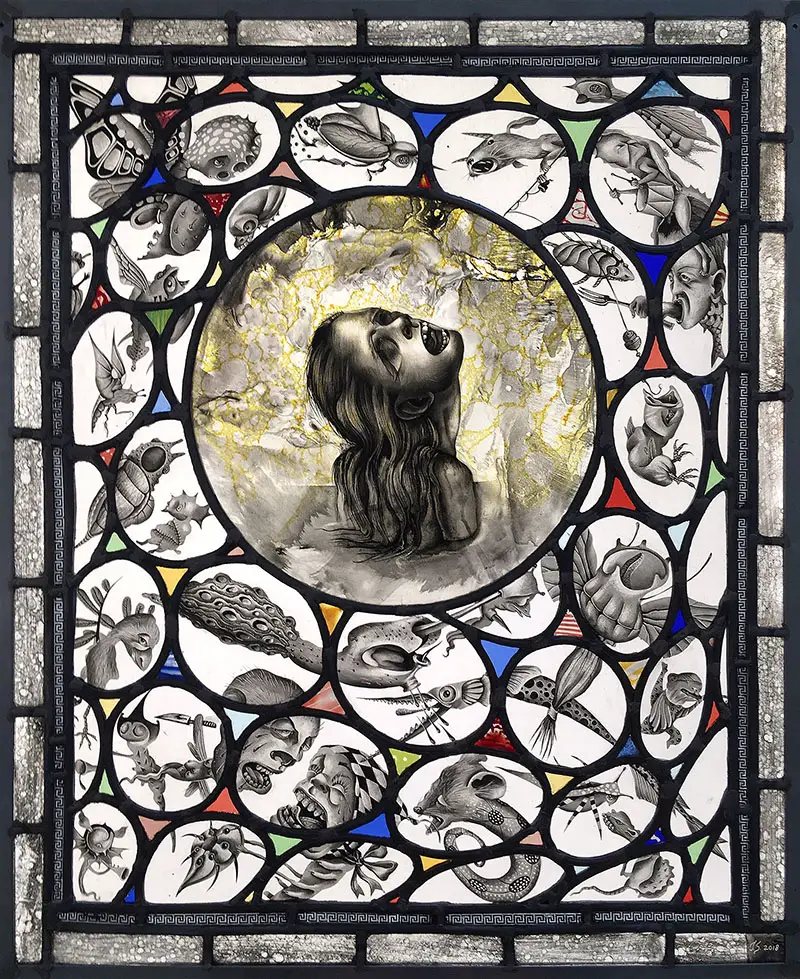
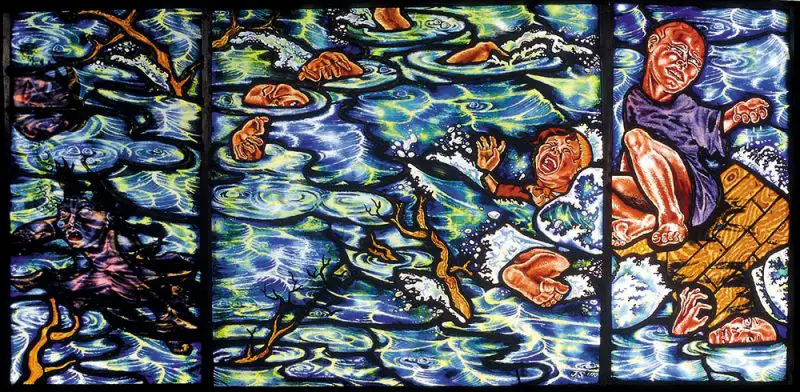
Shown cropped at top:
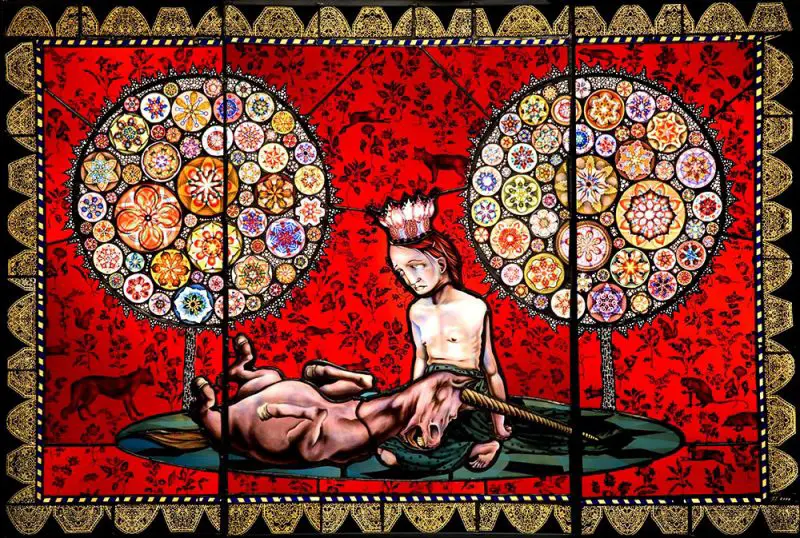
The Path to Paradise: Judith Schaechter’s Stained-Glass Art at the Memorial Art Gallery is showing through May 24, 2020 after which it will travel to two additional venues in the United States: Toledo Museum of Art (June 27 to October 4, 2020) and Des Moines Art Center (February 5 to May 9, 2021).
Gallery Views:
The Catalog/Book:
The full-color, 160-page catalogue reproduces Schaechter’s 45 stained-glass panels, related drawings and process materials gathered from private and museum collections. The Path to Paradise includes an introduction by Glenn Adamson and essays by Jessica Marten, Virginia Chieffo Raguin and Diane C. Wright. Published by RIT Press in conjunction with MAG.
Watch the Artist talk about her work (video):
Judith Schaechter (courtesy of Claire Oliver gallery)
With brilliant color and dazzling beauty, Schaechter seduces the viewer to look closely at her work. The artist states: “Beauty is what has always captured the viewer’s attention and allows them to spend time with my work. Once involved, it is easier for them to read the content held just below the surface.” By design, nothing in Schaechter’s lightboxes allows for a straightforward narrative or a single meaning. Schaechter deliberately chooses images that are ambiguous enough to handle multiple viewer interpretations. Interested in the paradoxes of image-making and the tension between illusion and truth, the artist examines the notion that we can never gain the proper perspective necessary to gauge our current “reality” without completely disassociating ourselves through time or space. We can look to representations, i.e. works of art, to temporarily resolve this dilemma.
All images courtesy of Judith Schaechter
You can see the processes on her blog at https://judithschaechterglass.blogspot.com/
Follow the artist on Instagram here
Additional images and information courtesy of the following:
• Claire Oliver
• Memorial Art Gallery
• Rochester Institute of Technology
